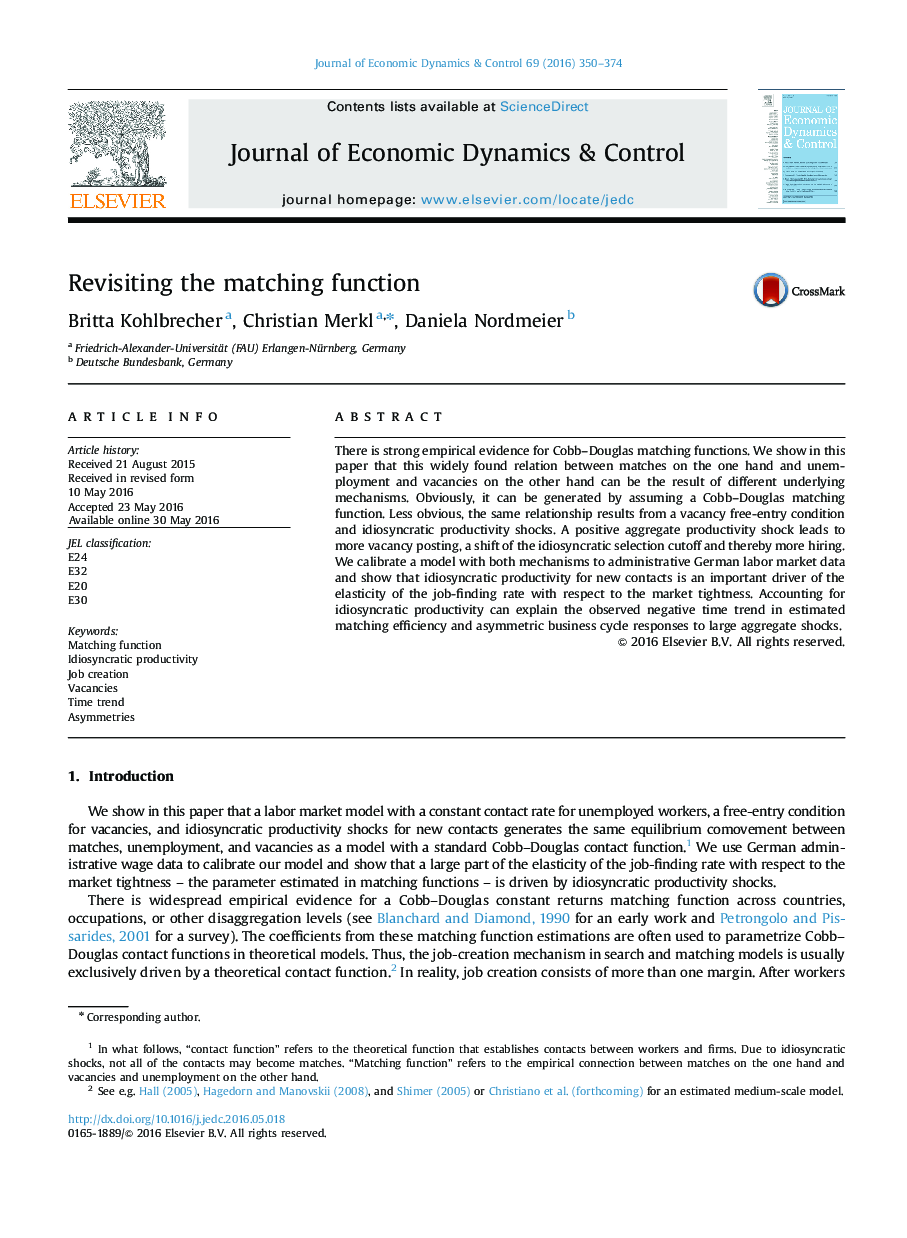| Article ID | Journal | Published Year | Pages | File Type |
|---|---|---|---|---|
| 5098154 | Journal of Economic Dynamics and Control | 2016 | 25 Pages |
Abstract
There is strong empirical evidence for Cobb-Douglas matching functions. We show in this paper that this widely found relation between matches on the one hand and unemployment and vacancies on the other hand can be the result of different underlying mechanisms. Obviously, it can be generated by assuming a Cobb-Douglas matching function. Less obvious, the same relationship results from a vacancy free-entry condition and idiosyncratic productivity shocks. A positive aggregate productivity shock leads to more vacancy posting, a shift of the idiosyncratic selection cutoff and thereby more hiring. We calibrate a model with both mechanisms to administrative German labor market data and show that idiosyncratic productivity for new contacts is an important driver of the elasticity of the job-finding rate with respect to the market tightness. Accounting for idiosyncratic productivity can explain the observed negative time trend in estimated matching efficiency and asymmetric business cycle responses to large aggregate shocks.
Related Topics
Physical Sciences and Engineering
Mathematics
Control and Optimization
Authors
Britta Kohlbrecher, Christian Merkl, Daniela Nordmeier,
